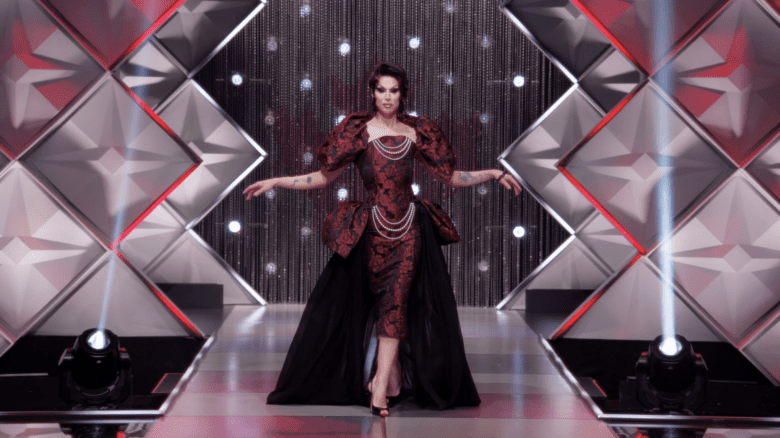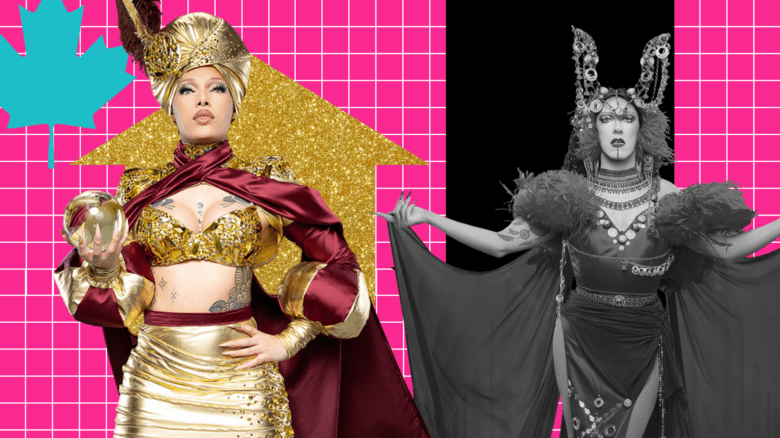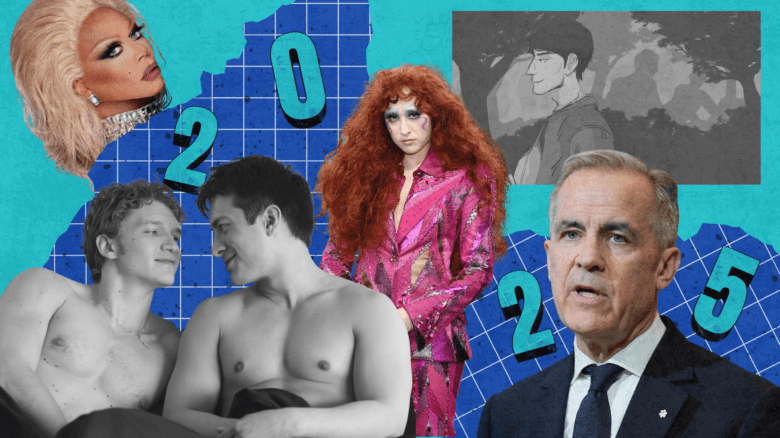A large, black and white photograph of a woman thrusting her finger up at the camera accosts you as you enter the home of Tempermettle. It’s one of many jolts in this space, created by the Toronto design team who built the 6.6 metre, sheet-metal ship that appeared in this year’s Pride parade.
The 405kg ship carried six women in clear plastic casts painted with chainmail armour and wire mesh breast plates.
It was one of the most arresting sights at the Jun 27 parade.
“One of the big points of us doing this was to take [Pride Day] to everyone,” says Rowena O’Connor, Tempermettle’s self-described “interactive sculptor.”
“We wanted to represent a different area of Pride that’s never been done before – smaller, female-based businesses.”
“Pride is really male-centred,” adds partner Gillian Farnsworth. “[It] feels like a boys’ club. A lot of women just want to identify with the Dyke March.”
But instead of opting out, the two women, who formed Tempermettle five years ago (as an art collective), decided to refurbish the ship they’d originally built for Maudit, a film airing on Bravo this August.
So the biggest expense was already lowered quite a bit. The ship cost $5,000.
Within two weeks, they ground down the ship’s exterior, refinished it, and added waves and a water pump to spray 540 kilos of water at revellers already soggy from the rain. Then the entire ship had to be dissembled, loaded on a flatbed, and reassembled.
(The truck was $110 an hour, but the duo finagled the cost down to $55 an hour. And Tempermettle applied for a fee waiver – it costs $100 to get into the parade, which was paid for by one of the corporate sponsors.)
The pair, who also construct props for music videos (former clients include David Bowie, Crash Test Dummies and Barenaked Ladies), say their artistic aim is to take live female forms and integrate them with an environment. “I got tired of canvas and got interested in flesh,” Farnsworth says.
Their live installation art consists of body painting women and exhibiting them in various contexts – the Viking wenches aboard the ship for example, or the women covered in plaster casts who sat typing in one Vancouver show.
The models move but don’t talk, although one model in the Vancouver exhibit typed “Fuck Off!” when a male admirer began trying to engage her in conversation.
“People automatically think it’s performance art. But that’s just because [the exhibits] are human. But it’s not a performance; there’s no choreographed movement,” Farnsworth explains.
“The work is proactive in terms of audience response. With traditional paintings, the viewer can just pass by and impose their opinion on the art,” she continues.
In other words, this is art that looks back.
Two suits of armour hang on a living room wall, spikes protruding like medieval iron maidens from their already formidable plaster and scrap metal torsos.
“Armour’s like a second skin,” say the two pretty, petite designers who look incongruously tender in contrast to the foreboding creations surrounding them.
“The armour isn’t like a mask to hide behind, but it shows the layers of experience built up over the years,” Tempermettle’s manager, Joanna Renaud, explains.
And hiding isn’t in the cards for these two designers. The duo is already planning next year’s Pride float and say several other women’s businesses are planning to follow suit.

 Why you can trust Xtra
Why you can trust Xtra


